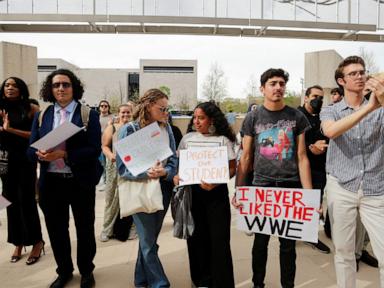“The path of least resistance,” opined Henry David Thoreau, “leads to crooked rivers and crooked men.” As our nation takes a cold, hard look at our failing public education system, can we honestly say that we have heeded Thoreau’s warning?
If the widespread acceptance of artificial intelligence in the classroom is any indication, the answer is a resounding "No."
“Our North Star is to create educational experiences that excite and empower learners everywhere with AI literacy,” Charlotte Dungan, COO of the AI Education Project, told Harvard’s ED Magazine. “I think the possibilities for ChatGPT to remove rote work from the classroom and empower deep learning experiences are exciting.”
But what is the “rote work” of which Dungan speaks? Researching a topic by seeking out multiple (human) viewpoints. Strengthening literacy skills by scouring resources for new information. Formulating conclusions by using logic to decipher the resources. Using rhetoric to create persuasive arguments to advance said conclusion.
To those genuflecting to the AI golden calf, that is now considered “rote work.”
Nobody likes doing grunt work. It is hard, tedious and time-consuming. But it is also a process that builds character and knowledge. It is the process by which students become critical thinkers who have built a strong foundation on which they can tackle the problems that, most assuredly, will come before them.
Public education, however, has become a go-with-the-flow enterprise — and in an age where students see a social media platform where you can obtain fame without hard work, why shouldn’t they be able to receive the “A” without doing the study? That is exactly what AI provides: a short cut.
Should we be surprised that public education policy advocates for the path of least resistance? In the late 1980s, “schools of education” began training teachers in the “gold star” theory — every student gets a gold star for trying. The reward was the attempt, not the achievement.
The gold star soon gave way to the participation trophy. In classrooms where the outcome is guaranteed, there are no winners or losers. And if there are no winners, there is no need to keep score.
Enter standards-based grading: a philosophy in which the A through F grading scale is set aside in favor of a subjective yardstick that allows retakes and repetition over consequences and commitment.
Artificial intelligence could now become the final nail in the coffin of educational excellence, by removing the “rote work” from learning and creating an educational environment in which critical thinking is replaced with automation.
The usual retort us that we need to teach students how to use AI. But this is a cop-out. When school districts rushed laptops and iPads into classrooms, they said they would teach students how to use them. Fifteen years later, can we say students use these devices for academic pursuits? Or do they use them to play games in class without detection?
There is a reason that the men who created this tech send their kids to schools that don’t use it; it is addictive, not academic. Just look at the Waldorf School.
If we give AI to students lacking content knowledge, we will have left the toddler unattended in the candy store. More damning, we will have allowed students to use a never-ending source of ...












